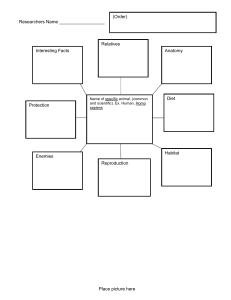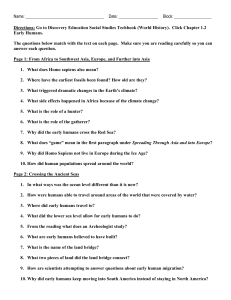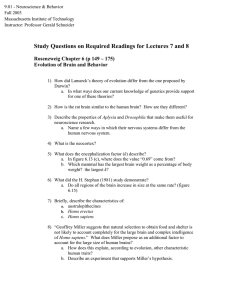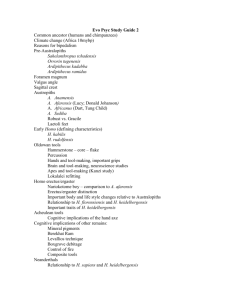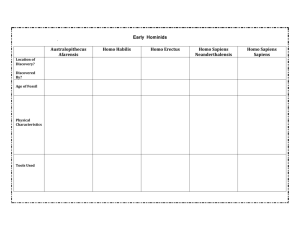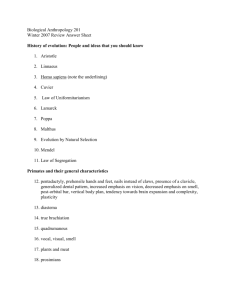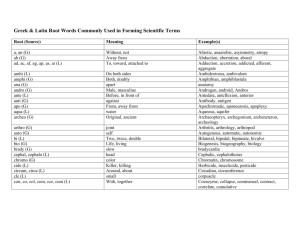Human Evolution Article Questions
advertisement
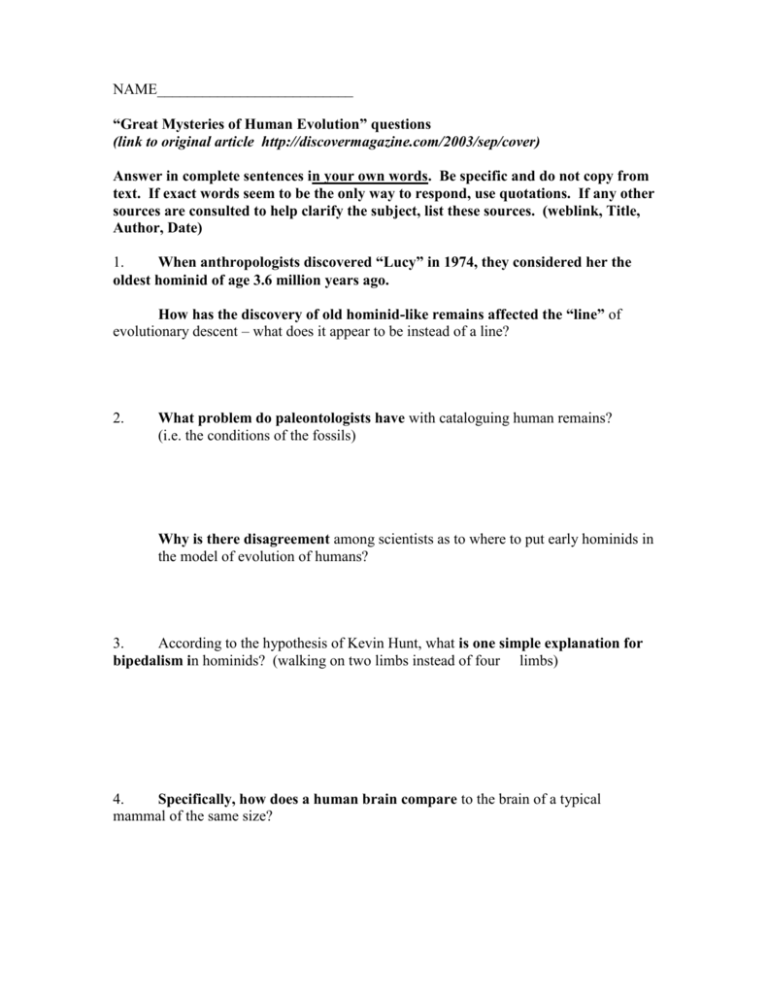
NAME__________________________ “Great Mysteries of Human Evolution” questions (link to original article http://discovermagazine.com/2003/sep/cover) Answer in complete sentences in your own words. Be specific and do not copy from text. If exact words seem to be the only way to respond, use quotations. If any other sources are consulted to help clarify the subject, list these sources. (weblink, Title, Author, Date) 1. When anthropologists discovered “Lucy” in 1974, they considered her the oldest hominid of age 3.6 million years ago. How has the discovery of old hominid-like remains affected the “line” of evolutionary descent – what does it appear to be instead of a line? 2. What problem do paleontologists have with cataloguing human remains? (i.e. the conditions of the fossils) Why is there disagreement among scientists as to where to put early hominids in the model of evolution of humans? 3. According to the hypothesis of Kevin Hunt, what is one simple explanation for bipedalism in hominids? (walking on two limbs instead of four limbs) 4. Specifically, how does a human brain compare to the brain of a typical mammal of the same size? 5. What are some advantages for an organism with a large brain? 6. According to the fossil and archeology records, when did early humans first use tools? Is tool-making and use of tools restricted to humans? 7. Why did “homo ergaster” not advance in human terms? 8. According to findings of “expressions of a modern mind”, when do scientists believe that modern humans – homo sapiens – first appear? 9. Do modern humans have a distinct or great advantage over homo erectus and neanderthals who did not survive? 10. How much of the human genome (genetic material) is identical to a chimpanzee? 11. What specific types of genes will scientists look for to determine what makes homo sapiens distinctly “human”? 12. What is the significance of homo sapiens idaltu – see letter “I” in helping determine our closest ancestor? Where did today’s surviving homo sapiens most likely originate?
